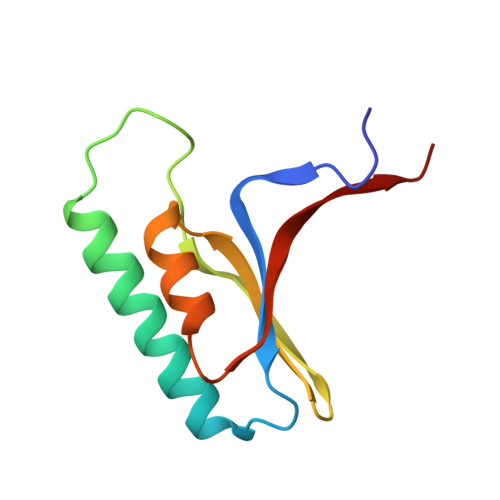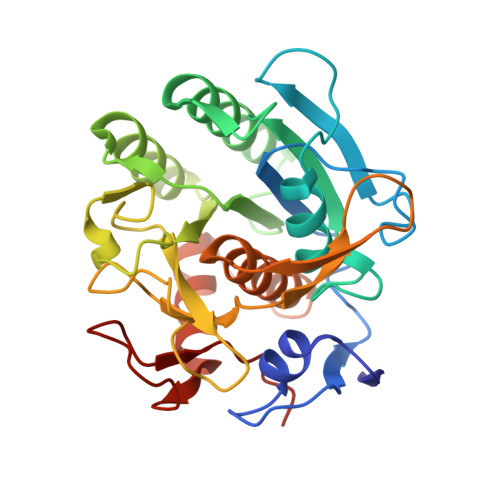Targeting Aspergillus allergen oryzin with a chemical probe at atomic precision.
Pattelli, O.N., Diec, D.D.L., Guo, W., Russi, S., Fernandez, D.(2023) Sci Rep 13: 17926-17926
- PubMed: 37864071
- DOI: https://doi.org/10.1038/s41598-023-45028-z
- Primary Citation of Related Structures:
8GKO, 8GKP, 8GKQ, 8U45 - PubMed Abstract:
We report the molecular basis of Aspergillus fumigatus oryzin, allergen Asp f 13, or alkaline proteinase ALP1, containing the sequence motif His-Asp-Ser of the subtilisin family, structure, and function at atomic detail. Given the resolution of the data (1.06 Å), we use fragment molecular replacement with ideal polyalanine α-helices to determine the first crystal structure of oryzin. We probe the catalytic serine through formation of an irreversible bond to a small molecule compound, specifically labeling it, describing the amino acid residues performing the catalytic function. Defined by a self-processed pro-peptide, the active site architecture shapes up pocket-like subsites that bind to and unveil the S1'-S4' substrate binding preferences. We use molecular modeling to dock a model of the pro-peptide in the S1-S4 region and to dock collagen along the active site cleft. Opposite to the face harboring the catalytic serine, the enzyme binds to a calcium ion in a binding site created by backbone flipping. We use thermal unfolding to show that this metal ion provides structural stability. With no known host inhibitor identified thus far, this structure may hasten the progress of developing new therapeutic agents for diseases caused by pathogenic fungi.
Organizational Affiliation:
Sarafan ChEM-H, Stanford University, Stanford, CA, 94305, USA.




















